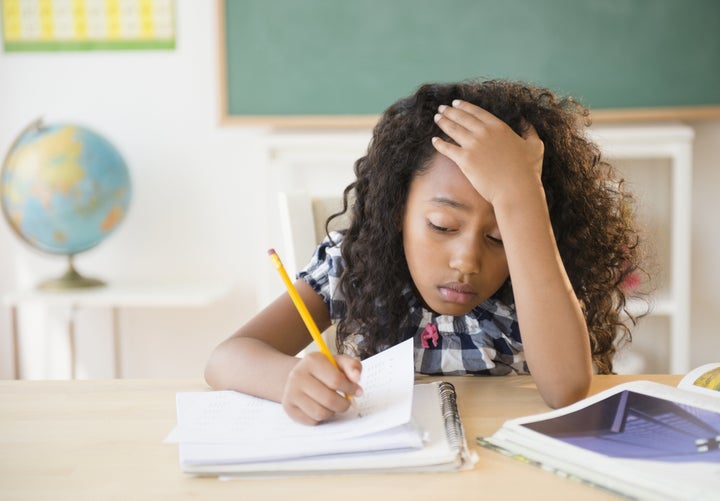
During the 2011-2012 school year, nearly 3.5 million public school students were given an out-of-school suspension at least once. Of that number, 1.55 million students were suspended multiple times. They were sent home from school for a spectrum of offenses, ranging from minor misbehaviors, like disrupting class, to more serious ones, like possession of drugs.
But the implications of these suspensions go far beyond an individual student and their school record. Just one suspension makes a student significantly more likely to drop out of high school, and later, get involved with the criminal justice system or receive public assistance. On a national scale, this results in foregone national income, foregone tax revenues and an increase in crime and needed social services. These economic losses end up costing taxpayers billions of dollars, according to a new analysis from the UCLA Center for Civil Rights Remedies at UCLA’s Civil Rights Project.
“Not only will school districts increase graduation rates and generate billions of dollars in economic activity if they stop suspending so many students, the research also shows that reducing the racial discipline gap makes good economic sense and will reduce social costs that hit communities of color the hardest,” Daniel J. Losen, director of the Center for Civil Rights Remedies at UCLA, said in a press release for the report.
The report seeks to put an exact dollar amount on how much school suspensions cost taxpayers, and finds that overall, the cost of in-school and out-of-school suspensions for 10th-grade students exceeds $35 billion. This wasn't always the case. Since the 1970s, rates of school suspension have been on the rise, and still tend to disproportionately affect students of color. But this isn't an inevitability. The report highlights school districts, like Los Angeles, that have started to reduce their reliance on suspensions as a discipline tool. Many districts have to begun using restorative justice programs as a means to stymie misbehavior while keeping kids in school.
Researchers used several datasets to glean their conclusions, focusing specifically on high schoolers in Florida, California and the nation as a whole. For California and the U.S., researchers used a national longitudinal dataset for the class of 2004 to parse numbers on 10th-grade student suspensions and high school dropout rates. For Florida, researchers used a state-specific dataset to parse the same numbers for ninth-graders. To estimate the causal relationship between suspensions and high school drop outs, researchers controlled for a number of factors, like poor academic performance and socioeconomic status. They found that students are 12 percent more likely to drop out of high school if they have been suspended from school, even after controlling for outside factors.
From there, researchers estimated the monetary impact of each dropout, using a previous analysis about the economic value of a high school degree. They looked at this impact using two measures: fiscal and social losses. Fiscal losses are those that relate specifically to lost tax revenue. Social losses "include the aggregate losses incurred by dropouts personally such as their lower income, diminished productivity, and higher expenditures on health care due to poorer health," says the report.
Researchers found that each additional high school dropout amounts to $163,000 in fiscal losses and $364,000 in social losses over a lifetime. When added together, the number of dropouts caused by suspensions -- which totaled 67,000 -- cost the nation $35 billion. This means that if schools decreased their suspension rates, it could have an enormous economic impact.
Dr. Russell Rumberger, a co-author of the study and professor at University of California Santa Barbara, told The Huffington Post the study has its limits. For one, the data on suspension rates is somewhat dated. In some places, suspension rates have already started decreasing. Additionally, the study's data is limited to ninth- and 10th-graders. However, Rumberger thinks the study's overall message remains the same, regardless of numbers.
"If you take the national figure of $35 billion, maybe it changes to 30 billion or 28. It's still a huge number," said Rumberger. "The overall message and conclusions would not change."
The report recommends that schools carefully monitor their suspension rates and implement more effective alternatives. Alternatives to suspension take time and money, but the benefits should ultimately outweigh the costs. In Los Angeles for example, the report notes, "the teachers union has complained that many teachers have not been trained in alternative methods like restorative justice or social and emotional learning." But careful consideration and targeted resources should help change this.
"We do have known interventions that can be used instead of suspensions, especially out-of-school suspensions, to mediate it. If you put a kid back in the classroom and nothing changes, then what's going to stop that kid from misbehaving once again," said Rumberger. "You can do things to keep the kid in the building and address the needs of that child so they will not have another episode."
______
Rebecca Klein covers the challenges faced in school discipline, school segregation and the achievement gap in K-12 education. In particular, she is drilling down into the programs and innovations that are trying to solve these problems. Tips? Email Rebecca.Klein@huffingtonpost.com.
______
Related Stories:
